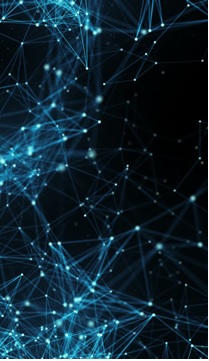In studying the network dynamics of complex systems such as the world-wide-web, genes regulatory networks, and social networks it regularly happens that we do not have access to the complete information about them. Not only the information is incomplete, but also some of the  information may be wrong. So, how can we understand the general or particular behavior of such networks in these scenarios?! In this type of giant networks, a new and very interesting type of uncertainty arises when there is absolutely no guarantee whether a node or a link is visible at all for some parties.
information may be wrong. So, how can we understand the general or particular behavior of such networks in these scenarios?! In this type of giant networks, a new and very interesting type of uncertainty arises when there is absolutely no guarantee whether a node or a link is visible at all for some parties.
There is a network of colleagues, a network of high school classmates, a network of friends in Facebook, a network of relatives and so many other networks forming a very big puzzle of different types of relationships. This puzzle is like a multilayer or multidimensional network which we call it, the Dark Network, a network of networks, containing the whole information of socio-technical or biological systems. Almost no one can have access to the Dark Network, and even if some does, it is a not a kind of problems to be solved computationally! What supercomputer can handle this amount of data?
This problem can even get more interesting when the present knowledge between the parties are not the same! What type of effort can we make to settle the dispute between two agents or parties when they have different pictures of something in common? Notice that every two contradicting perspectives about such situations can be correct, depending on what side you are looking at the problem!
We are actually developing physics-based algorithms which can point to hidden connections between spatially disparate nodes of the Dark Network. This includes finding clusters and communities emerged from such a many-many-body system, especially when the expectation of sub-networks about the whole picture are contradicting each other.
Refs:
– Transparency Effect in the Emergence of Monopolies in Social Networks, Amirhossein Shirazi, Ali Namaki, Amir Ahmad Roohi and Gholamreza Jafari, Journal of Artificial Societies and Social Simulation 16 (1) 1 (2013)